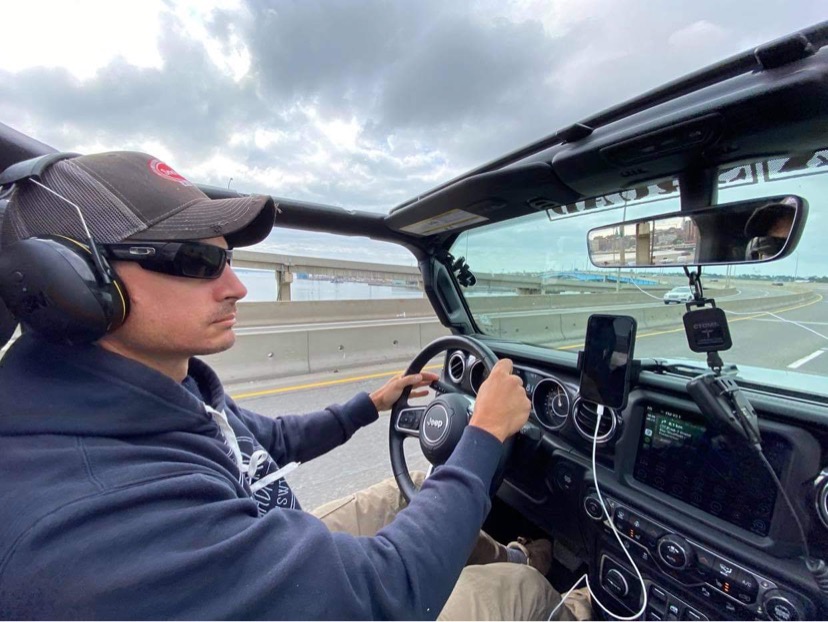Creating Impactful Adventure Videos for Promotions
- Virgil - NBX Owner

- Sep 22
- 3 min read
Adventure videos capture the thrill, excitement, and beauty of outdoor experiences. When done well, they can inspire viewers, promote brands, and drive engagement. Crafting these videos requires a blend of creativity, technical skill, and strategic planning. This guide will walk you through the essentials of adventure video production, helping you create compelling content that stands out.
Understanding the Essentials of Adventure Video Production
Adventure video production involves capturing dynamic and often unpredictable outdoor activities. Whether it’s hiking, kayaking, mountain biking, or rock climbing, the goal is to convey the intensity and emotion of the experience.
Key elements to focus on include:
Storytelling: Every adventure has a story. Highlight the journey, challenges, and triumphs.
Visuals: Use wide shots to showcase landscapes and close-ups to capture emotions or details.
Sound: Natural sounds like rushing water or wind add authenticity. Consider background music that complements the mood.
Pacing: Balance fast-paced action with slower, reflective moments to keep viewers engaged.
For example, a mountain biking video might start with a serene sunrise shot, then shift to fast downhill sequences, and end with a victorious rider at the summit.

Wide angle view of mountain trail with a cyclist riding downhill
Techniques and Tips for Effective Adventure Video Production
Creating high-quality adventure videos requires both preparation and adaptability. Here are practical tips to enhance your production:
Plan Your Shots: Scout locations beforehand and list must-have shots.
Use the Right Gear: Lightweight cameras, drones, and action cams like GoPros are ideal.
Stabilize Your Footage: Use gimbals or stabilizers to avoid shaky videos.
Capture Multiple Angles: Mix wide, medium, and close-up shots for variety.
Shoot in Natural Light: Early morning or late afternoon provides the best lighting.
Be Ready for Weather Changes: Pack protective gear for your equipment.
Engage the Viewer: Include moments that evoke emotion or suspense.
For instance, using a drone to capture a sweeping view of a river rafting trip adds a dramatic perspective that ground shots cannot achieve.

High angle view of drone capturing a river rafting adventure
What is Video Production in Advertising?
Video production in advertising is the process of creating videos specifically designed to promote products, services, or brands. It involves several stages including concept development, scripting, filming, editing, and distribution.
In the context of adventure videos, advertising production focuses on showcasing the excitement and lifestyle associated with a brand or destination. The goal is to connect emotionally with the audience and motivate them to take action, such as booking a trip or purchasing gear.
Key components include:
Target Audience Analysis: Understanding who the video is for.
Clear Messaging: Communicating the brand’s value proposition.
Call to Action: Encouraging viewers to engage further.
High Production Quality: Ensuring visuals and sound are professional.
Adventure videos used in advertising often highlight the unique experiences a brand offers, making them powerful tools for marketing campaigns.

Eye-level view of camera setup on tripod filming a cliffside adventure
Incorporating Storytelling to Enhance Adventure Videos
Storytelling is the heart of any impactful adventure video. Without a narrative, even the most stunning visuals can feel hollow. Here’s how to build a compelling story:
Introduce the Setting: Start by showing where the adventure takes place.
Present the Challenge: Highlight obstacles or goals.
Show the Journey: Capture the effort, teamwork, and moments of doubt.
Celebrate the Achievement: End with a satisfying resolution or success.
Use voiceovers or on-screen text to add context if needed. For example, a kayaking video might tell the story of navigating a challenging river, emphasizing the skill and courage required.
Tips for storytelling:
Keep it concise and focused.
Use emotional triggers like excitement, fear, or joy.
Include personal perspectives or testimonials.
This approach makes the video relatable and memorable.
Optimizing Adventure Videos for Promotion and Engagement
To maximize the impact of your adventure videos, consider these promotional strategies:
Leverage Social Media: Share short clips or teasers on platforms like Instagram, Facebook, and TikTok.
Use SEO Best Practices: Optimize video titles, descriptions, and tags with relevant keywords.
Collaborate with Influencers: Partner with outdoor enthusiasts who can amplify your reach.
Include Clear Calls to Action: Encourage viewers to visit your website or book an experience.
Analyze Performance: Use analytics to understand what works and refine future videos.
For businesses, investing in professional promotional video production can elevate brand presence and attract new customers.
Final Thoughts on Crafting Adventure Videos That Inspire
Creating adventure videos that resonate requires a blend of technical skill, creativity, and strategic thinking. By focusing on storytelling, using the right equipment, and optimizing for promotion, you can produce videos that not only showcase thrilling experiences but also drive engagement and conversions.
Remember, the best adventure videos transport viewers to the heart of the action, making them feel part of the journey. With practice and attention to detail, your adventure video production can become a powerful tool for promotion and inspiration.





Comments